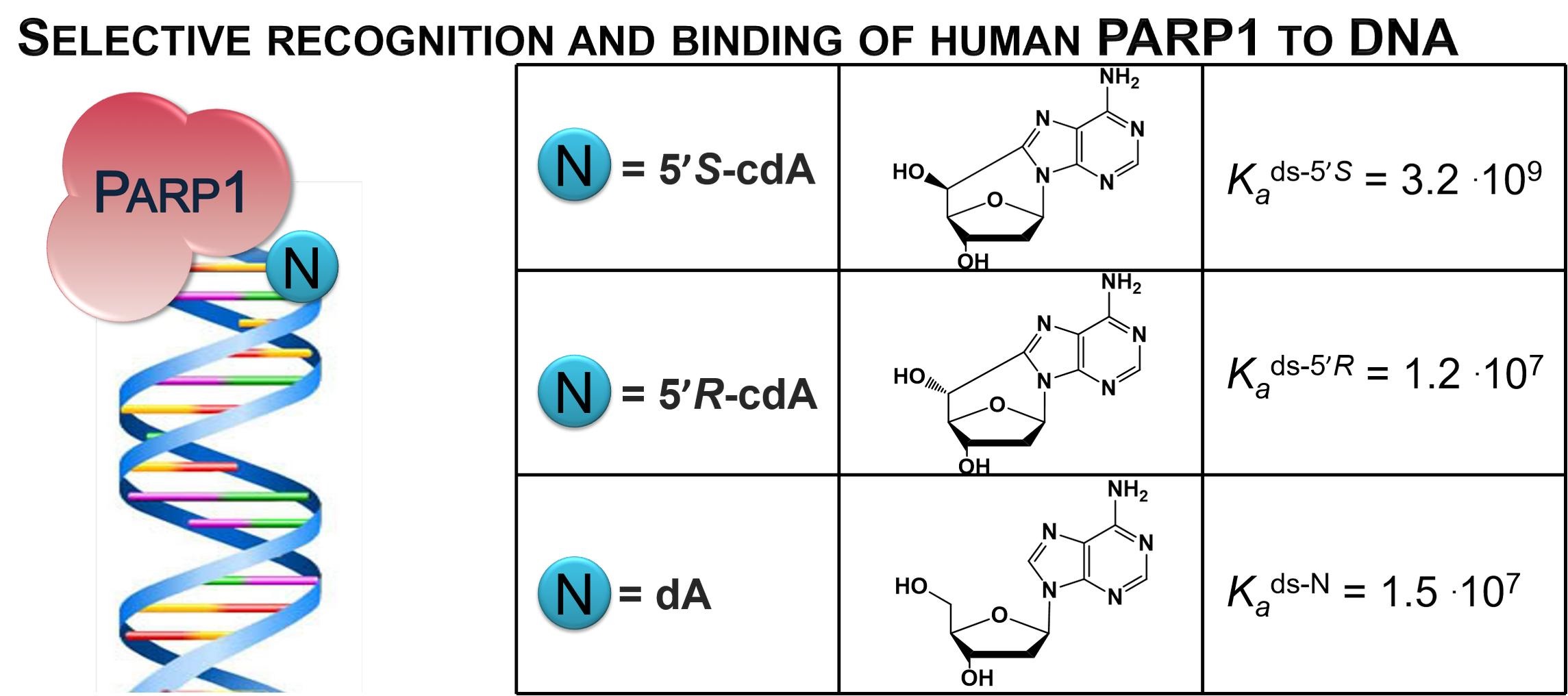Abstract5′,8-Cyclo-2′-deoxyadenosine (cdA), in the 5′R and 5′Sdiastereomeric forms, are typical non strand-break oxidative DNA lesions, induced by hydroxyl radicals, with emerging importance as a molecular marker. These lesions are exclusively repaired by nucleotide excision repair (NER) mechanism with a low efficiency, thus readily accumulating in the genome. Poly(ADP-ribose) polymerase1 (PARP1) acts as an early responder to DNA damage and plays a key role as a nick sensor in the maintenance of the integrity of the genome by recognizing nicked DNA. So far, it was unknown whether the diastereomeric cdA lesions could induce specific PARP1 binding. Here we provide the first evidence of PARP1 to selectively recognize the diastereomeric lesions 5′S-cdA and 5′R-cdA in vitro as compared to deoxyadenosine in model DNA substrates (23-mers) by using circular dichroism,fluorescence spectroscopy, immunoblotting analysis and gel mobility shift assay. Several features of the recognition of the damaged and undamaged oligonucleotides by PARP1were characterized. Remarkably, PARP1 efficiently binds to both cdA lesions in the double stranded (ds)-oligonucleotides. In particular, PARP1 proved to bind 5′S-cdAwith a higher affinity constant for the 5'S lesion in a model of ds DNA than 5′R-cdA, showing different recognition patterns, also compared with undamaged dA. This new finding highlights the ability of PARP1 to recognize and differentiate the distorted DNA backbone in a biomimetic system caused by different diastereomeric forms of a cdA lesion.

